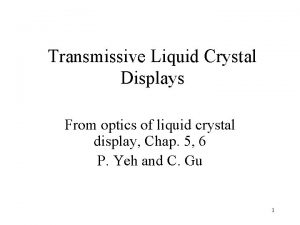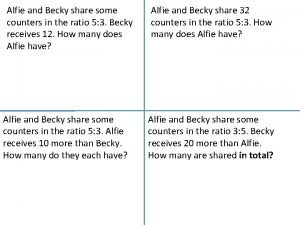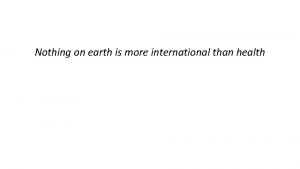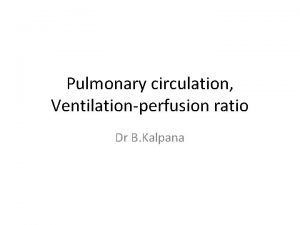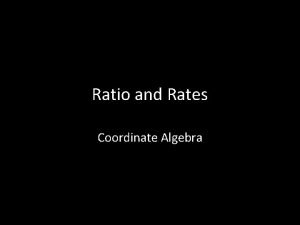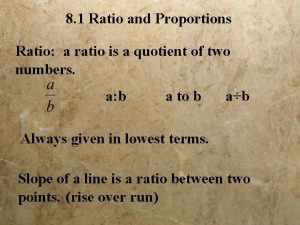Ventilationperfusion ratio Normally and more in disease some









- Slides: 9

Ventilation-perfusion ratio �Normally and more in disease, some areas of the lungs are well ventilated but have almost no blood flow, whereas other areas may have excellent blood flow but little or no ventilation, this will seriously impair gas exchange. �Normal ventilation and perfusion might be deceiving if ventilation and blood flow going to different parts of the lungs. �if V= 0 & Q=N V/Q= 0 no gas exchange �if V= N & Q= 0 V/Q= ∞ also no gas exchange

Ventilation-perfusion ratio �When V/Q= 0 : alveolar air will reach equilibrium with blood CO 2 & O 2 (venous blood) PO 2= 40 mm. Hg PCO 2= 45 mm. Hg �When V/Q= ∞ : there’s no blood so no gas exchange the alveolar air will equal the inspired air PO 2=149 mm. Hg PCO 2= 0



Ventilation-perfusion ratio �Physiologic shunt: when V/Q is below normal due to inadequate ventilation part of the venous blood passing the capillary does not become oxygenated total amount of shunted blood per minute: _Qps_= _Ci. O 2 -_Ca. O 2 Qt Ci. O 2 – Cv. O 2

�Qps : Physiological shunt per minute �QT : Cardiac output �Cio 2 : O 2 concentration in arterial blood with ideal ventilation perfusion ratio �Cao 2 : O 2 concentration measure in arterial blood �Cvo 2 : O 2 concentration measured in mixed venous Bl �

Ventilation-perfusion ratio �Physiological dead space: when V/Q is above normal considered as wasted ventilation measured by the following equation: _Vds_ = _Pa. CO 2_-_PECO 2_ Vt Pa. CO 2

Ventilation-perfusion ratio �Abnormalities : 1 - V/Q in upright chest : ventilation & blood flow are less at top blood flow is decreased more than vent. Top = 2. 5 x ideal V/Q (phys. dead space) Bottom = 0. 6 x ideal V/Q (phys. shunt)

Ventilation-perfusion ratio 2 -V/Q in chronic obstructive lung disease: in chronic smoker, bronchial damage will occur leading alveolar air trapping and emphysema, this will lead to: a-unventilated alveoli because of obstruction b-wasted ventilation because of damaged blood vessels
 Lirik lagu more more more we praise you
Lirik lagu more more more we praise you More more more i want more more more more we praise you
More more more i want more more more more we praise you Normally white vs. normally black
Normally white vs. normally black Bharathi viswanathan
Bharathi viswanathan Contact force
Contact force Some trust in horses
Some trust in horses Carly and james share some money in the ratio 5:3
Carly and james share some money in the ratio 5:3 Alice and olivia share some sweets in the ratio 7 3
Alice and olivia share some sweets in the ratio 7 3 Expand gobi fff campaign
Expand gobi fff campaign Human history becomes more and more a race
Human history becomes more and more a race


